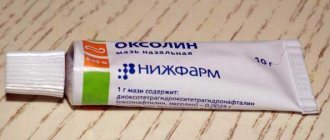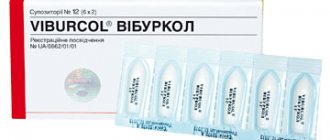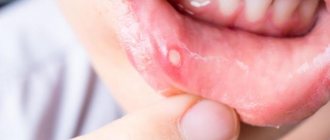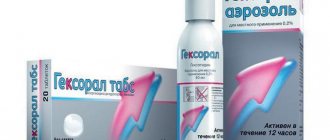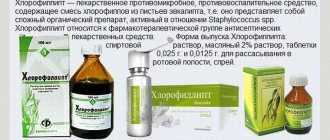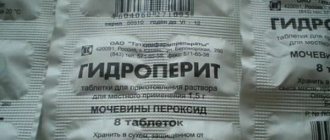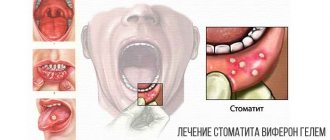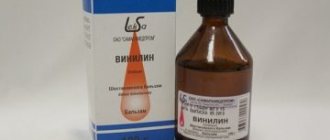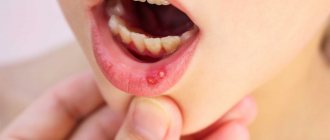5.7. Stomatitis
Stomatitis very often has no connection with acute respiratory infections. At the same time, an increase in body temperature and breathing through the mouth, which often occurs during ARVI, leads to dryness in the mouth and to the fact that saliva loses its protective properties. As a result, the mucous membranes of the oral cavity are defenseless; numerous viruses and bacteria take advantage of this, resulting in stomatitis.
The development of stomatitis most seriously affects the child’s well-being, as it is accompanied by severe pain. Children refuse food and drink. Another unpleasant feature of stomatitis is that even slight damage to the mucous membranes of the oral cavity is usually accompanied by a significant increase in body temperature.
The main symptom of stomatitis is that painful areas of redness appear in the mouth (on the mucous membrane of the cheeks, on the arches limiting the entrance to the pharynx, on the gums, palate, tongue). The sizes of the areas are different, the shape is different, the number is different, the intensity of redness is different. The main thing is that normally the oral mucosa is pink, moist, smooth, and homogeneous. Any formation that goes beyond the scope of “homogeneity-sameness”, discovered by parents in a child’s mouth, is real or potential stomatitis, and this requires medical attention.
The most common type of stomatitis is the so-called aphthous stomatitis.
Aphtha is a special term used to mean “a small area of damaged mucous membrane.” In most cases, aphthae look like small, round, shallow ulcers. The surface of the aphthae is often covered with a yellowish or gray coating, and the aphthae itself is surrounded by an area of intense redness.
In the vast majority of cases, the cause of stomatitis in children is viruses. As for aphthous stomatitis, its occurrence is usually caused by one of the variants of the herpes virus. The mentioned “usually” determines the fact that the authors of many medical textbooks consider the concepts of “aphthous stomatitis” and “acute herpetic stomatitis” as synonyms. Herpetic stomatitis is a contagious disease that most often affects children between the ages of one and three years. It is characterized by a wave-like course - that is, aphthae appear almost simultaneously, this is accompanied by a high temperature, then several unpleasant but stable days, and a new wave of rashes with another rise in body temperature.
With acute stomatitis - not only with aphthous stomatitis, with any kind - the lymph nodes under the lower jaw often become enlarged and painful.
And at the end of the chapter there is one more stomatitis, which everyone knows about, which everyone has seen, but the scientific name can scare anyone. We are talking about the so-called angular stomatitis (Latin angulus - angle). Angular stomatitis is manifested by skin irritation and cracks in the corners of the mouth. Translated into Russian, this condition is designated by the word jammed.
author Komarovsky E.O. ORZ book: a guide for sensible parents published 03/16/2010 16:41
What is stomatitis and what types exist?
The name of the disease indicates its exact location; translated from Latin “stoma” means mouth. Stomatitis is an inflammatory lesion of the oral mucosa (most often ulcerative). Both adults and children can get sick. But the disease affects children more often. This is due to the fact that the mucous membrane at this age is easily infected by pathogenic microflora, because the child’s body is not yet perfect, local and general protective reactions are not sufficiently developed. Statistics show that almost 80% of young children have suffered from this disease at least once.
Stomatitis is the general name for a whole group of diseases of the oral mucosa. Therefore, each of them has its own symptoms and its own treatment methods. Depending on the etiology, stomatitis is divided into several types:
- viral, including herpes - has a viral nature, infection occurs by airborne droplets. The virus can exist on objects (clothing, toys, etc.) for some time. The initial symptoms are similar to those of ARVI: lethargy, fever, runny nose, cough (not always). On the second or third day, light ulcers with a red border appear on the tongue, mucous membranes of the cheeks and lips;
- traumatic - inflammation is provoked by mechanical damage to the inner surface of the mouth, for example, a burn from a hot drink or food, a scratch from a toy stuck in the mouth, biting if the child has an incorrect bite;
- allergic – the inflammatory process is provoked by the entry into the body of a substance that causes an allergic reaction. Most often caused by drugs;
- candidiasis (fungal) - begins when the mucous membrane is infected with the fungus Candida (“thrush”). A striking symptom is a dense white coating on the tongue.
Treatment
Therapy for stomatitis in children involves general rules that are mandatory for all types of the disease, and drug treatment aimed at eliminating the underlying cause.
Treatment should be prescribed by a pediatrician after examining the child, collecting the necessary information and identifying the causative agent of the infection.
General recommendations
General recommendations for treating stomatitis in young children include:
- Drink plenty of fluids (it is allowed to give the child unsweetened compotes and decoctions, but it is best to persuade the child to drink plain water).
- Regular ventilation.
- Air humidification in a children's room.
- Excluding refined and sweet foods from the child’s diet. If your baby is receiving complementary foods, you should avoid fruit purees made from sweet fruits (bananas) and cereals with added sugar.
- Medications depending on the type of stomatitis
For young children, lotions with chamomile decoction are used, which help relieve inflammation, have an antiseptic effect, and reduce pain.
Victoria Druzhikina
Neurologist, Therapist
Treatment of Herpetic stomatitis
Therapy for this type of disease is carried out in three stages:
- relieving irritation and eliminating the inflammatory process;
- healing of wounds formed after opening ulcers;
- fighting the virus and activating the body’s immune reserves.
To treat herpetic stomatitis in children under 3 years of age, antiseptic treatment of the oral cavity is used, after which antiviral medications are applied. Given the young age, rinsing with special infusions and solutions is excluded.
To treat the affected areas, you need to moisten a cotton swab with a solution of Furacilin (Rivanol) and gently wipe all the places where the rashes are localized. After this, you can begin applying ointments (for example, “Oxolinic” or “Interferon”) . The procedure is performed every three hours, unless a different treatment regimen is recommended by the pediatric dentist.
Doctor's advice
In the case of bacterial stomatitis, treatment with a solution of chlorhexidine bigluconate 0.05% is effective. If the child is small, then moisten the cotton wool, squeeze it out and wipe the affected area. Make sure that the drug does not flow from the cotton wool into the child’s throat. Processing is carried out 2-3 times per day. If the child knows how to rinse his mouth, then rinse 3-5 times a day. Hydrogen peroxide solution should not be used to avoid burns.
Victoria Druzhikina Neurologist, Therapist
When herpetic stomatitis is diagnosed in a child aged 1 year (or younger), parents do not always cope with antiseptic treatment measures. If it is not possible to treat the cavity with a tampon, you can purchase a special brush for young children (from 4 months), which is placed on the finger, wrap it in gauze and lubricate the affected areas.
Restoring immunity and fighting herpes viruses occurs with the help of medications (Arbidol, Acyclovir, Imudon). To heal wounds, you can lubricate them with sea buckthorn oil or rosehip oil.
Treatment of Candidal (fungal) stomatitis
Drugs with antifungal effects can only be prescribed to older children, so treatment of candidiasis in children under 3 years of age is predominantly local.
Newborn children can be prescribed medications such as Candide, Nystatin or Clotrimazole - these drugs are safe for children and can be used from the first days of a baby’s life.
In a clinic setting, a doctor may prescribe an irrigation procedure (irrigation of the oral cavity) using sodium bicarbonate in the form of a 2% solution, followed by treatment with sodium borate (10%).
An important condition is maintaining oral hygiene and regular treatment of lesions (plaque removal). This can be done using a soda solution (2 tablespoons of soda per mug of warm water). This procedure will help restore the alkaline environment, which is detrimental to yeast-like fungi. At home, it is recommended to repeat it at least 4-6 times.
Treatment of Bacterial Stomatitis
Treatment of bacterial stomatitis (often occurring at 2-3 years of age) is aimed at destroying bacteria that cause the development of the disease and deterioration of the baby’s well-being.
Severe cases require taking antibiotics, which are prescribed by a pediatrician after taking a smear to determine the causative agent of the disease and its sensitivity to various pharmacological groups of antibiotics.
For local treatment, you can use antibacterial sprays (Tantum Verde, Hexoral, etc.). Treatment must be combined with antiseptic treatment.
Allergic stomatitis
This type of stomatitis, in addition to hygiene measures, includes taking allergy medications and antihistamines (histamine blockers). Young children can use Tavegil or Suprastin for these purposes - both drugs are in drops.
Treating stomatitis in young children is not the easiest task, but it is quite feasible. To do this, you need to consult a doctor in time, follow his recommendations, monitor the baby’s nutrition and hygiene, and not make any changes to the treatment regimen on your own. The use of traditional methods should only be carried out with the permission of a doctor after examination and an accurate diagnosis.
To learn how to recognize and treat stomatitis in a child, watch the video:
This article has been verified by a current qualified physician, Victoria Druzhikina, and can be considered a reliable source of information for site users.
Bibliography
1. https://stgmu.ru/userfiles/depts/therapeutic_dentistry/Obyavleniya/stomatity_2013.pdf
Rate how useful the article was
5 Voted by 1 person, average rating 5
Did you like the article? Save it to your wall so you don’t lose it!
Treatment of stomatitis in children
There is no single correct treatment for stomatitis in children. Treatment is selected individually for each child after visiting a pediatric dentist and greatly depends on the form of stomatitis. Depending on the type of disease, treatment may include both local and general therapy methods.
Despite the impossibility of selecting treatment for all types of stomatitis, there are a number of recommendations that should be followed for any form of the disease. During the course of the disease, it is recommended to adhere to a strict diet that excludes eating hot or too cold foods, as well as avoiding other foods that irritate the oral cavity. Particular attention must be paid to oral hygiene. After every meal, it is recommended to rinse your mouth. For rinsing, you can use special herbs or antiseptics.
When treating the viral form of stomatitis in children, various anesthetics and antiviral drugs, anti-inflammatory ointments and gels, and immunomodulating drugs are used topically.
To treat candidal stomatitis, it is necessary to create a certain alkaline environment in the oral cavity. This is achieved by lubricating the baby’s mouth with a solution of soda or boric acid. Pharmacies also have special antifungal solutions, such as Candide. It is recommended to lubricate after every meal.
In the treatment of bacterial stomatitis, as in the treatment of other infections, antibiotics are used. Self-administration of antibiotics is strictly prohibited. Antibiotics should be selected correctly and prescribed only by the pediatric dentist, based on the sensitivity of microorganisms to certain drugs.
When treating aphthous stomatitis, oral anesthesia is used with the help of anesthetic gels, and the mucous membrane is treated with antiseptic drugs. Phototherapy using ultraviolet rays is also used. At the same time, it is recommended to carry out general immunostimulating therapy with the help of special drugs and vitamins.
Return to list of services
Kinds
Today, 8 types of stomatitis can be diagnosed:
- bacterial;
- aphthous - manifests itself when immunity decreases due to gastrointestinal diseases and anemia;
- herpetic – occurs due to the herpes virus;
- viral;
- angular;
- allergic – a reaction to an allergen entering the child’s body;
- traumatic - the cause may be an accidental bite of the lip with teeth or scratches on the gum;
- fungal – infection of the oral cavity by fungi of the genus Candida.
All types of stomatitis can occur in childhood. However, from birth to 3 years, children are especially susceptible to aphthous, candidal, herpetic and allergic types. During the period of active growth of baby teeth, traumatic stomatitis often appears, caused by rupture of the soft tissue of the gums.
Note! Stomatitis does not always occur on its own. Quite often, rashes in the mouth are a sign of other diseases, so before treatment it is necessary to carry out a series of diagnostic measures to discover the exact cause.
Symptoms
The classic clinical picture for diagnosing stomatitis includes the following symptoms:
- swelling of the mucous membrane;
- the appearance of a white or yellowish coating;
- bad breath;
- dryness or excessive salivation;
- enlarged lymph nodes and increased temperature.
Stomatitis in children has similar and different symptoms. Each type of disease has its own differences in manifestations.
With allergic stomatitis, minor ulcerative lesions appear on the palate, gums, cheeks, and lips. They pass as soon as the irritant can be identified and removed. With aphthous, even one spot with a diameter of up to 1 cm may appear in the mouth. Its outer part is covered with a film, the ulcer is yellow, and its edges are inflamed. If stomatitis is herpetic, then the mucous membrane is affected by numerous rashes that merge into one large wound. These are blisters with clear liquid and are extremely painful. Often the herpes virus causes a deterioration in the general condition of the child’s body, accompanied by body aches and high fever.
The most common type of stomatitis in a child’s mouth is candidiasis. Its common name is thrush. 9 out of 10 parents have encountered this phenomenon at least once. It is characterized by the appearance of a white cheesy coating on the tongue, gums, and cheeks of the baby. It is often observed after completing a course of antibacterial therapy or as a consequence of infection of the mother’s nipples by Candida fungus. Candidiasis can also be caused by poor hygiene.
On a note! Regardless of the type of stomatitis, its treatment should be comprehensive and begin immediately after the first signs of damage to the oral cavity are detected!
Treatment options
How to cure stomatitis in a child? It’s worth noting right away that you can’t prescribe medications to your baby yourself. Only the pediatrician makes a diagnosis and makes recommendations for therapy. Attempts to overcome the disease on your own can lead to a worsening of the little patient’s condition. To determine the causative agent of the inflammatory process, a scraping is made and a virological study is carried out.
For stomatitis in children, what treatment will be most effective? Only those therapeutic measures will help that will affect the disease comprehensively, eliminating both the cause and external manifestations.
Medicines
When an accurate diagnosis is established, dentists prescribe medications for the treatment of stomatitis in children. They are conventionally divided into symptomatic and special.
The purpose of the first is to eliminate the symptoms that accompany the disease. For this purpose the following is prescribed:
- vitamin complexes to strengthen the body;
- antiviral drugs that fight viruses;
- antipyretic and anti-inflammatory drugs;
- anesthetic gels;
- ointments and solutions for treating the oral cavity.
- need to drink plenty of fluids
- gentle diet (exclude sour, salty, spicy)
Candidal stomatitis is treated with special pharmaceuticals that contain substances that kill the fungus. Creams suitable for internal use are prescribed. If an allergic type is detected, the pediatrician will add antihistamine drops or tablets to the general list. If the rash is caused by the herpes virus, you cannot do without taking antiviral drugs, as well as local treatment of the mucous membranes with antiherpetic ointment.
Attention! The entire oral cavity needs to be treated, since pathogens are found everywhere on the mucous membrane. They are not visible to the naked eye, but if they remain in the mouth, they will continue to spread and the treatment will be delayed.
Folk remedies
Have you noticed stomatitis in a child and don’t know how to treat it? Drug therapy can be supplemented with the use of traditional medicine. Compositions prepared from natural ingredients are used to treat stomatitis in children over 2 years of age.
The following formulations are suitable for treating mouth ulcers.
Soda and salt
0.5 tsp each Dissolve the components in warm water. Rinse your mouth with the solution 3-4 times a day after meals. Baking soda relieves inflammation and disinfects well. The same composition, only diluted with water to a mushy consistency, can be used to clean off plaque from fungal stomatitis using a finger wrapped in gauze.
Honey and aloe
The leaf of the plant is ground to a puree, and the same amount of natural honey is added to it. Apply to affected areas three times a day.
Chamomile with honey
Dried flowers are brewed in the proportion of 1 tbsp. for 250 ml of boiling water. Add 2 tsp to the cooled broth. honey Rinse your mouth with warm liquid 2-3 times a day.
Rinses can be prepared from other ingredients:
- sage;
- rosehip;
- St. John's wort;
- oak bark;
- flaxseeds;
- yarrow;
- calendula;
- propolis tinctures.
Lotions of essential oils help a lot.
Important! Folk remedies can only be used after consulting a pediatrician!
How to prevent stomatitis
To reduce the risk of getting an infection in your mouth, you should:
- regularly wash toys, hands, pacifiers, bottles;
- carry out wet cleaning and ventilate the room where the baby spends his leisure time;
- strengthen the immune system: strengthen the child, give vitamins, maintain proper sleep and wakefulness;
- provide a balanced diet;
- fight the bad habit of biting nails or other objects (pencils, pens, rulers);
- Make an appointment with the dentist twice a year for a routine examination.
Any disease should be treated in a timely manner, otherwise negative consequences cannot be avoided. Carefully examine the child’s oral cavity at the first complaints. When stomatitis occurs in infants, the first symptoms include behavioral changes, crying, and refusal of the breast or bottle. Children aged 1 year and older will be able to independently point out to their parents the source of discomfort. Get treated promptly and be healthy!
Methods for preventing stomatitis
- Preventative visits to the dentist (twice a year), if necessary, dental treatment
- Strengthening the immune system (regime, good nutrition, hardening)
- Maintaining oral hygiene
- Getting rid of bad habits (finger sucking, toys, pencils, etc.)
- Maintaining household hygiene (thorough cleaning of premises, washing toys)
- Timely treatment of gastrointestinal diseases
The dental network offers services for the treatment of stomatitis in children. Our specialists are highly qualified and regularly improve their skills in leading clinics in Russia and Europe. The pediatric dentist will diagnose and prescribe effective treatment. We have a system of family and cumulative discounts.
You can contact any of the branches of our center in Moscow within walking distance from metro stations:
- Art. Alekseevskaya (VDNKh district, etc. Mira), address: st. 3rd Mytishchiskaya house 3, building 2;
- Art. Shelepikha, address: Shelepikhinskaya embankment, address: building 34, building 1.
Stomatitis is a serious disease; do not expect that it will go away on its own without consequences. Remember that your child's health depends only on you. If you notice the symptoms described in the article, sign up for “Smile” dentistry and get qualified help. We are waiting for you every day without breaks and weekends.
Treatment methods
Due to the fact that the etiology of each type of stomatitis is different, the approaches to treatment are also different. For example, a fungus needs to be fought with an antifungal drug, herpes with an antiherpes drug, allergies with an antihistamine, etc. Therefore, the main task of a doctor is to diagnose stomatitis, identify the cause of the disease and prescribe appropriate treatment. Therapy is carried out in two directions: relief of general symptoms and local effects on mucosal lesions. As a rule, the doctor prescribes medications and antiseptic treatment of the oral cavity in the form of applications and rinses.
Symptoms
- The child becomes nervous, capricious, lethargic, whiny, refuses to eat and sleeps poorly.
- With viral stomatitis, children sometimes develop a fever.
- The child complains of severe pain in the mouth, the submandibular lymph nodes are painful when pressed.
- There is an unpleasant odor from the mouth.
- When examining the oral cavity, you can see that the gums are swollen and bleeding, and ulcers (aphthae) have appeared on the tongue and mucous membranes - at first they resemble pimples, then they become covered with a whitish film.
Viral stomatitis in children is dangerous because at the initial stage its symptoms resemble a sore throat: the child has difficulty swallowing, complains of pain in the mouth, and upon examination the throat looks swollen. And if you self-medicate, you can ensure that dental aphthae will spread further. Only a specialist can make an accurate diagnosis.

